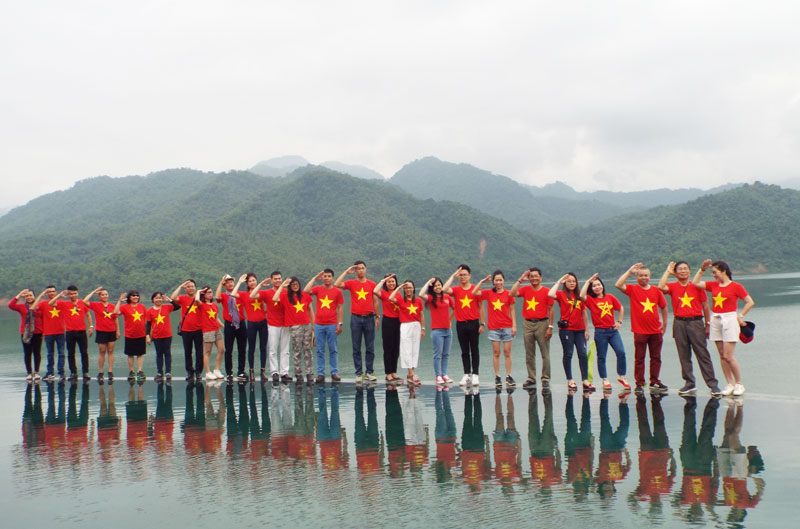
(HBO) – As the largest man-made lake in Southeast Asia, Hoa Binh lake has a poetic natural landscape with many small islands, which earns it the reputation as "Ha Long Bay on land.” The lake, which spreads across Hoa Binh city and four districts, is located inside the north’s key tourism area and a master plan to develop it into a national tourism site has been approved by the Prime Minister.

Mai Chau Hideaway tourism
site in Suoi Lon hamlet, Tan Mai commune, Mai Chau district, offers interesting
experiences to holidaymakers.
Hoa Binh province has adopted a thematic resolution and a specific
plan on tourism development around Hoa Binh lake, aiming to build services
meeting basic standards of a national tourism site by 2025. By 2030, the site
is expected to officially become a national tourism site equipped with synchronous
and modern technical infrastructure, with high-quality, diverse tourism
products. It is set to become the province’s biggest tourism centre and one of
the 12 key tourism zones of the northern mountainous region.
Many businesses have shown interest in investing in tourism around
Hoa Binh lake. Dai Doanh Company, for example, has scoped out Ngoi Hoa and Hien
Luong communes, and asked for permission from the province to compile a dossier
on investment in forestation in combination with leisure and eco-tourism in
Hien Luong commune.
Hanbek Company is considering a project on leisure tourism, with a cable
car system and entertainment facilities in Thai Thinh commune and Thai Binh
ward, Hoa Binh city.
Hoa Binh Tourism JSC is deploying a high-end leisure and eco-tourism
project in Sung island in Tien Phong commune, Da Bac district, which is
expected to welcome the first visitors in 2019 targeting the high-income
tourist segment.
The province hopes to attract investors to develop tourism products
unique to the locality such as spiritual tourism at Thac Bo Temple in Cao Phong
and Da Bac districts and Doi Co Temple in Hien Luong commune, Da Bac district,
along with high-quality leisure and eco-tourism in Sung island, Tien Phong
commune, Da Bac district, and community-based tourism in Ngoi, Tru, Ke and Da
Bia hamlets./.
A diverse chain of eco-tourism and resort destinations concentrated in Hoa Binh city and the districts of Tan Lac, Da Bac, and Luong Son… Along with the launch of several key high-quality resort tourism projects, these developments have reshaped the landscape and enhanced the appeal of Hoa Binh as a travel destination.
Boasting diverse terrain, a mild climate, and rich natural resources, Cao Phong district is increasingly asserting its place on Vietnam’s tourism map, attracting both domestic and foreign visitors. The district is renowned for its stunning landscapes, majestic mountains, a crystal-clear hydropower lake, and the unique cultural identity of local ethnic groups.
With its pristine landscapes, unique cultural heritage of Muong ethnic minority, and an expanding range of visitor experiences, Tan Lac district of Hoa Binh has fast become a captivating destination for both domestic and international tourists.
Until now, Sung village in Cao Son commune, Da Bac district remains the only Dao ethnic community in Hoa Binh province to develop a community-based tourism model. Beyond its untouched natural landscapes, cultural identity serves as the cornerstone attraction for visitors.
Alongside the diverse cultural identities of the Kinh, Muong, Tay, Thai, Dao, and Mong ethnic people, Hoa Binh province is also renowned as the "capital" of the northwestern Vietnamese cuisine, offering unique and distinctive dishes. At festivals, during Lunar New Year (Tet), or on significant family or community occasions, special dishes are prepared, leaving a lasting impression on visitors.
A Phong Linh (Yellow Tabebuia) flower garden in Thang village, Thach Yen commune, Cao Phong district is currently in full bloom, drawing a large number of visitors.



